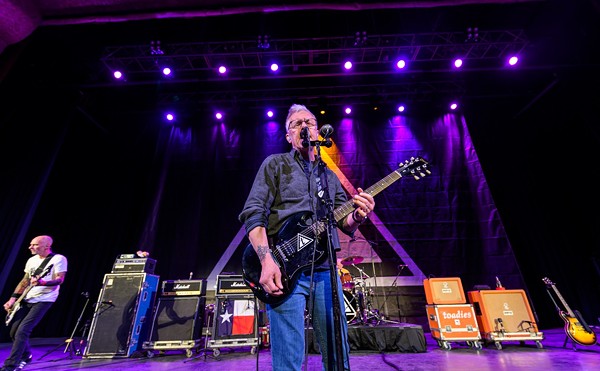San Antonio has its fair share of the makeshift variety, less of the spacious, state-of-the-art variety, and a handful that fall somewhere between the two extremes.
In a sense, recording engineering is like cooking. The average consumer doesn’t necessarily give a lot of thought to how the concoction was made or what ingredients were involved, but they notice when something strikes their fancy, and they can sense when something is missing.
The impulses toward a career in audio engineering and production are varied. For some, the seed is planted early, as with Mark E. Sinko, engineer and owner of Salmon Peak Recording Studios, a north San Antonio facility named for the limestone formation on which the building sits. “When I was 8, my parents bought me a tape recorder,” Sinko says.
For others, the impulse gradually emerges after sufficient time spent in the right place at the right time. Mack Damon of Rhapsody Street Studios says that after he inherited a teaching-
assistant position at North Texas State,
“Everyone just assumed that, because I was
always around the recording studio, I knew how to record.”
For a third group, engineering is simply a logical offshoot of other projects, as with Justin Morris, proprietor of Electro Studios. “I bought recording equipment because I wanted to run a record label and I figured the smartest thing a record label could do is have its own equipment,” Morris says.
San Antonio’s recording scene has recently experienced a transition. Last December, Morris closed Electro’s doors — although the studio temporarily re-opened this summer — and Rhapsody Street Studios is winding down for a September 1 closing. As a result, this is prime time for any ambitious would-be studio savant wanting to break out of mom’s spare bedroom.
A local band exploring recording options will quickly discover that there’s a multi-tiered structure to the local recording-studio industry. Salmon Peak’s elaborate 24-track setup, vintage Neve console, and readily available grand piano surely attract audiophiles seeking high production values. Both the control room and the “big room” are suspended on closed-cell neoprene strips laid “on a huge thick foundation ... `of` concrete blocks filled with dry, bagged sand … `piled` 22 feet high,” effectively exterminating “transference from outside.”
Smaller studios such as Electro have a slightly different appeal. “By and large they come to me because I’m cheap,” Morris says. “Some just come to me because they can drink and smoke in my place.” We all have our priorities.
As any artist knows, an engineer’s investment in their work is critical. Sinko puts it best: “We are the conduit for art.” Investing time in clients’ work to understand intention and expectation leads to the issue of time, and at most studios, time equals money. The pressure of “being on the clock” in a studio can be an intimidating and fund-depleting experience for any young band. That’s why some local studios avoid hourly rates.
Damon says his flat rate has “worked out well” to ensure a “fertile environment” for musicians, and Morris agrees. “If you have time, you `can` really care about those sounds to make them sound good.” Sinko says Salmon Peak does not charge by the hour, “`although` I do half days for vocalists” since no one can sing for eight hours. As Morris explains, one tradeoff with block rates is that, “Because I’m so cheap, I can’t quite afford to do it because of maintenance. I’ve found that with doing cheap work, the learning curve is very steep.”
Despite structural and philosophical differences, three very different places reflect similar feelings about the musical climate in the Alamo City. To Sinko, whose body of work is varied, “San Antonio is very diverse. There’s a complacency in the music business `here`, which is partly reflected `in not being` supported by the public. There’s nowhere to play anymore. It’s getting worse.”
Damon, who has worked with a host of major labels and artists, maintains a guarded optimism. “I think that San Antonio has all these amazing scenes going on. But there’s a mentality that it’s never just about the musicians. It’s about whether or not the market will support them.”
Morris points out: “By and large, San Antonio is extremely metal-influenced. It creeps into every aspect of our music scene. `The metal influence` has a lot to do with an intense love of Metallica and Slayer across all age groups. The thing that amazes me is how good the guitarists are at young ages.
For bands or songwriters thinking about tracking, the parameters are negotiable. Prioritization and connection with the people on the other side of the glass are the keys. •
















